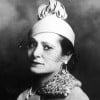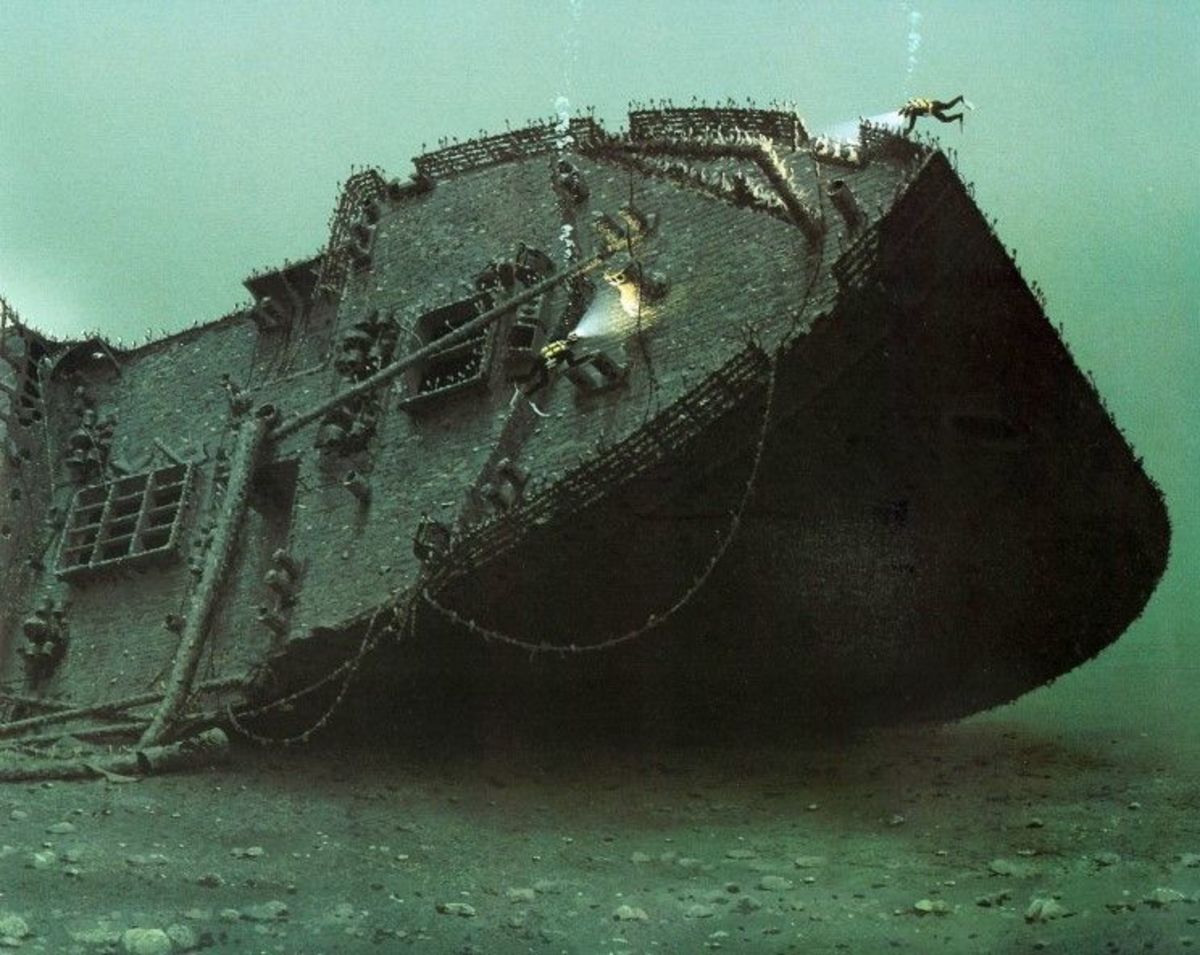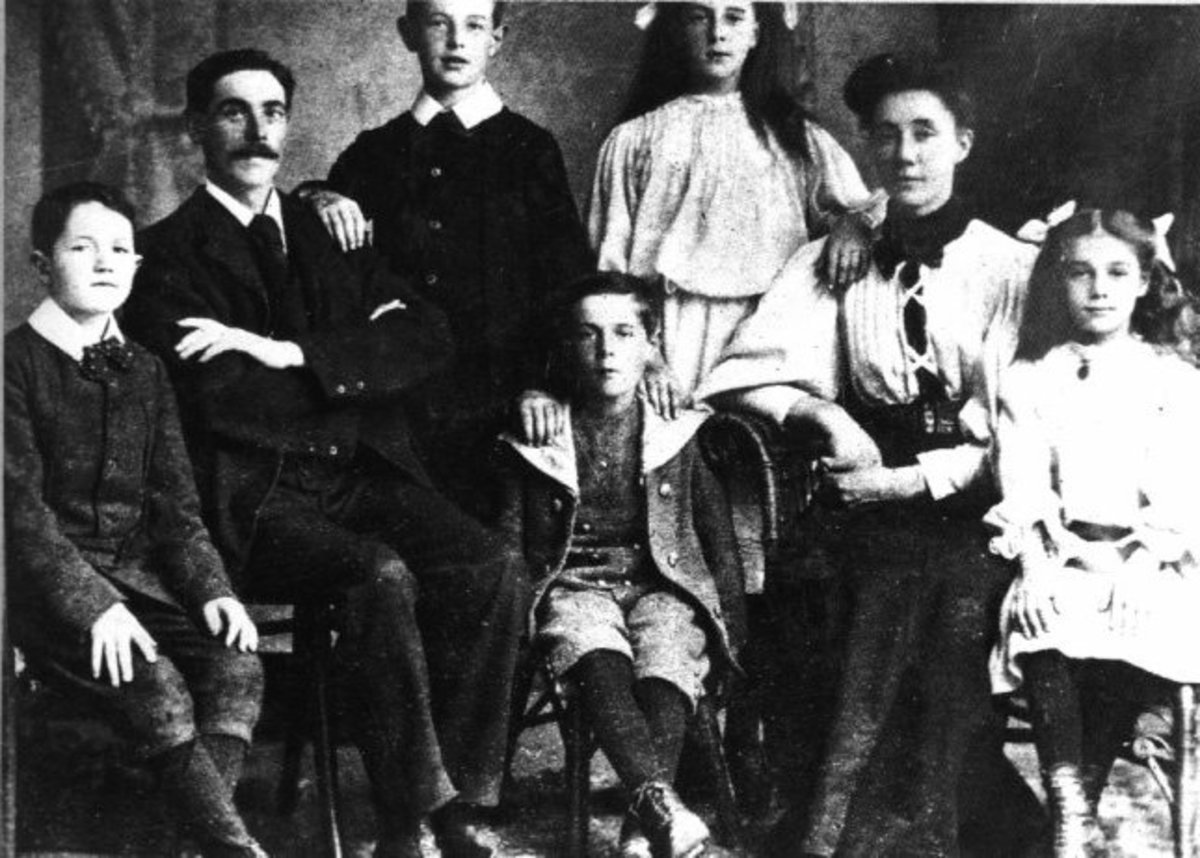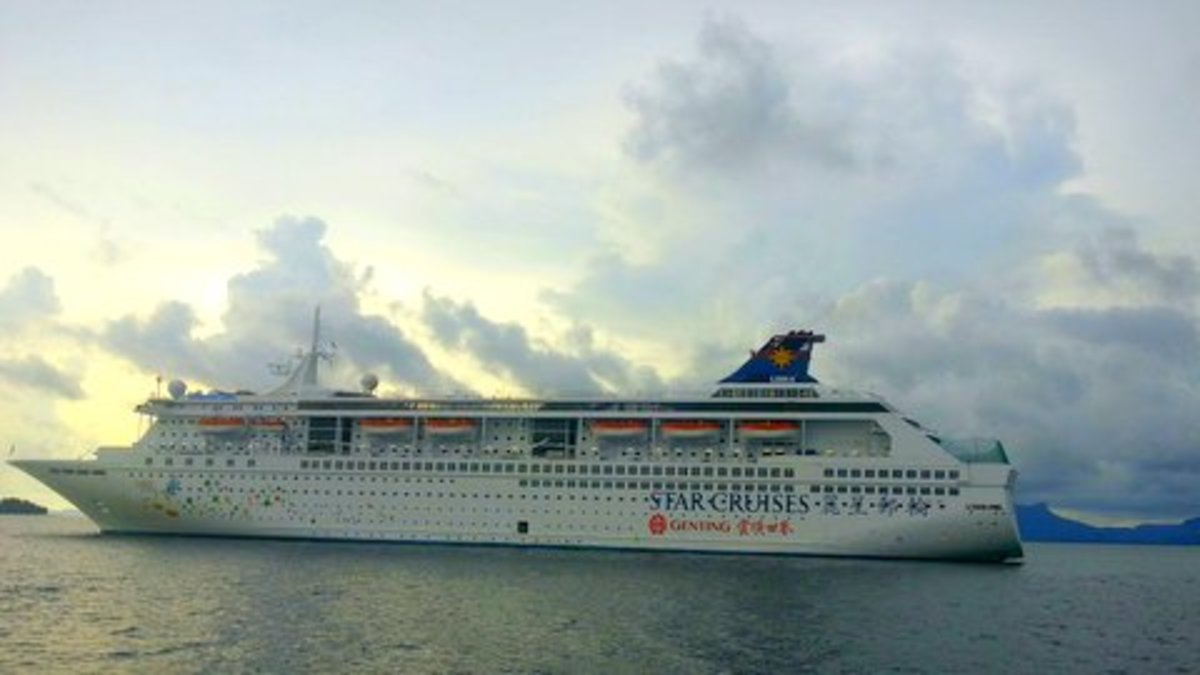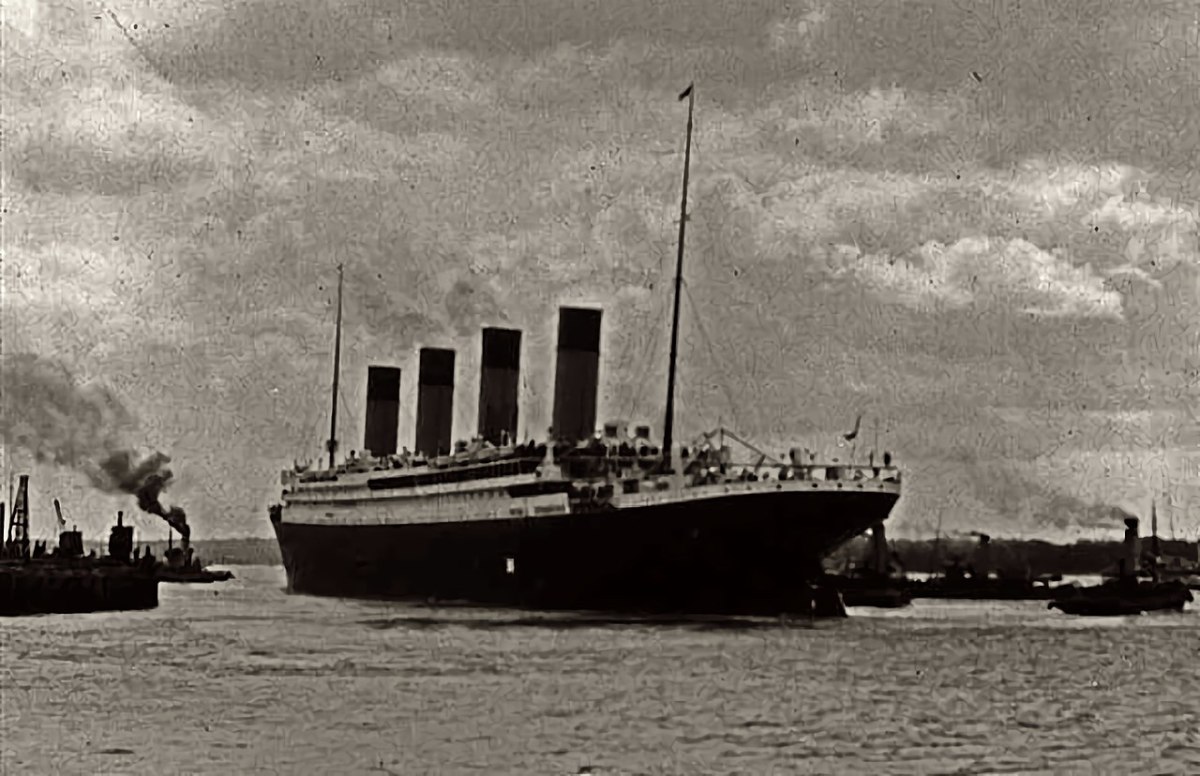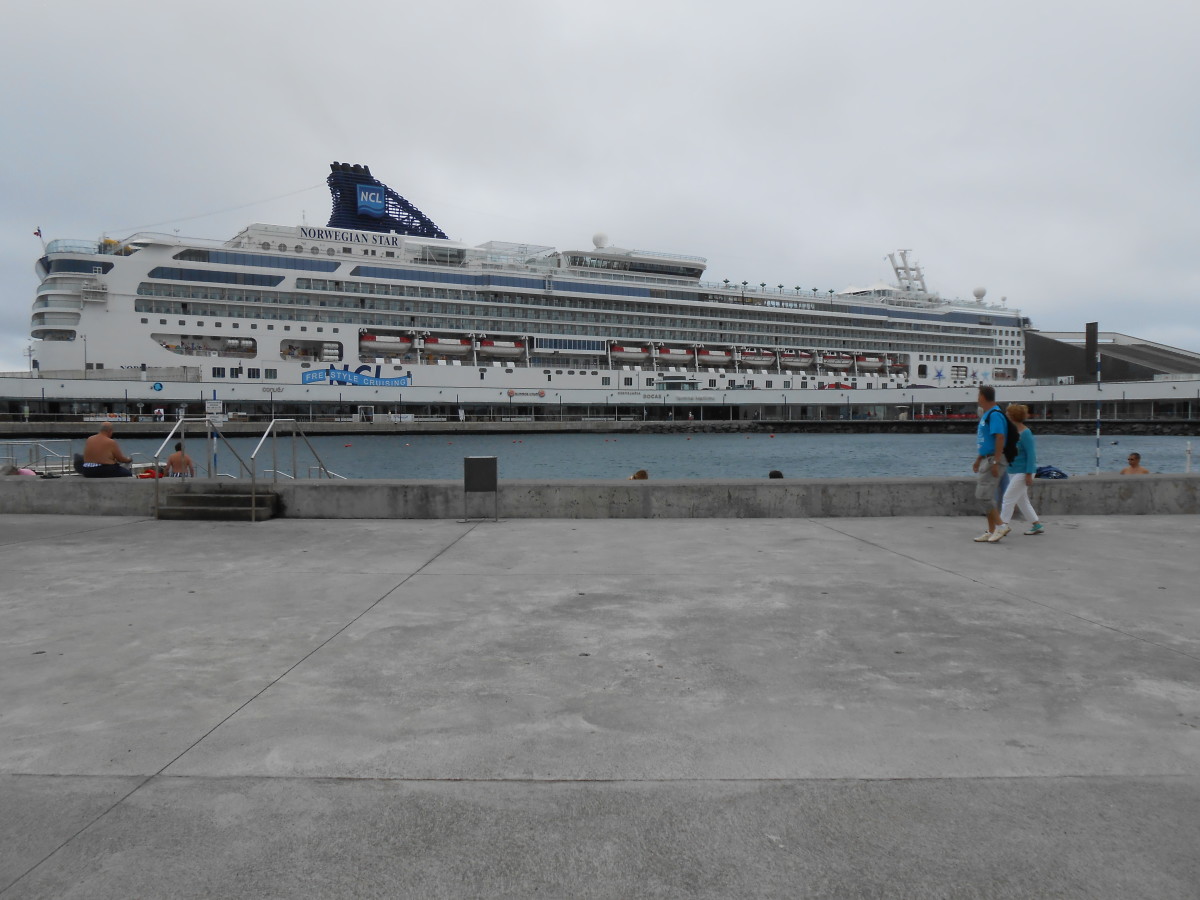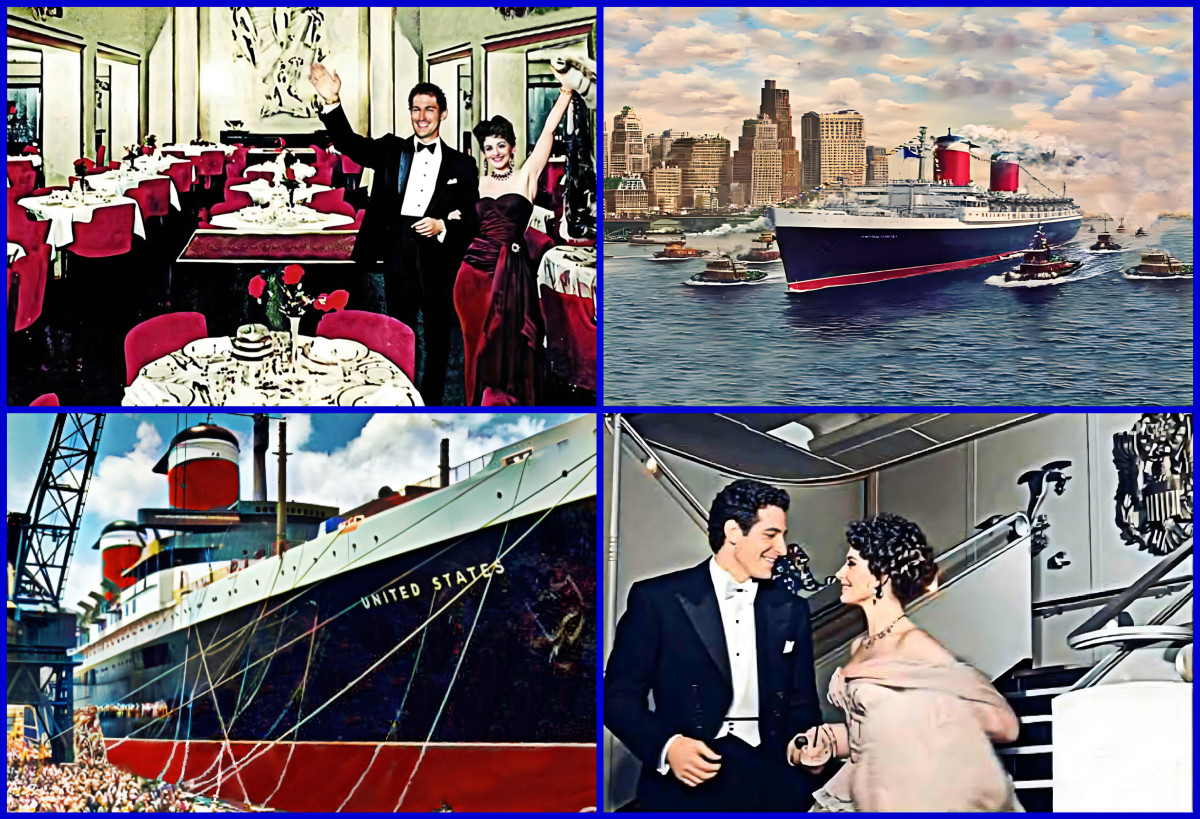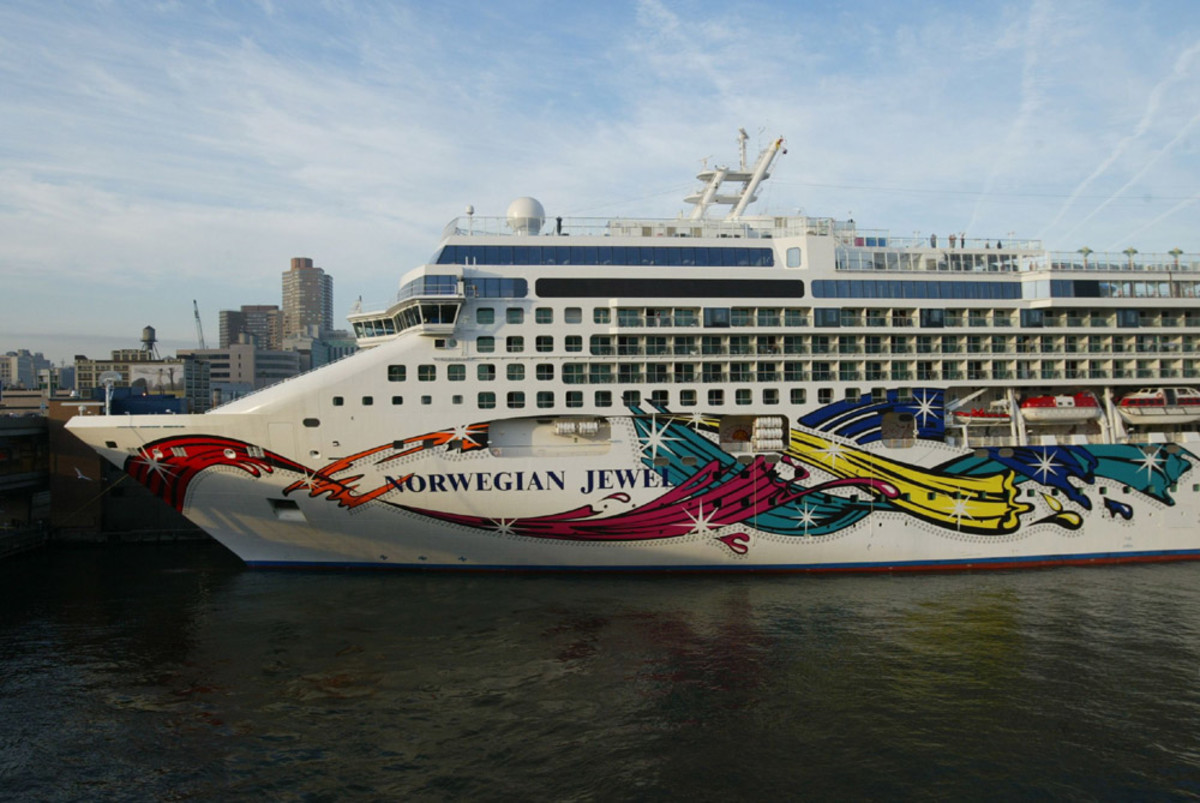Famous Shipwrecks, Central America- Titanic
The SS Central America
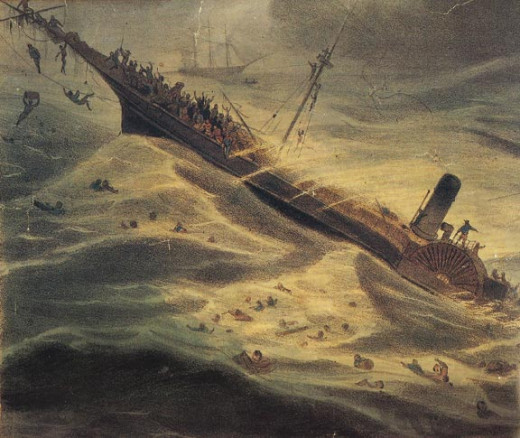
Ship Wreck
When the SS Central America sank in a hurricane in 1857, she carried the United States economy with her, and headlines screamed of the tragedy for many weeks. Eventually the tale of the sunken paddle wheeler was replaced by more pressing stores. Policy holders were paid, and the wreck was virtually forgotten. Then three men from Ohio using homemade, yet highly sophisticated, equipment found the ship's cargo of gold. Suddenly, the Central America was back in the news.
The SS Central America
The Central America left Havana harbor early on the morning of September 8, 1857, having arrived the prior evening. The 272 food wooden side-wheel steamship was one of two that made regular runs from Panama to New York, often carrying successful prospectors from California who boarded in Panama. On this, her forty-fourth voyage, the Central America carried about 580 passengers and more than a hundred crew members. She was laden with several tons for gold bars, freshly minted U.S. currency, and privately cast coins. New York banks eagerly awaited the ship's arrival, counting on the influx of gold to stave off an economic downturn that loomed on the horizon.
Traveling northward with the Gulf Stream, the ship hit the leading edge of a hurricane on the evening of September 9. The gale whipped the waves util they seemed to the passengers as tall as building. The winds shredded the sails, and water washed over the decks.
Within forty-eight hours the situation was dire. Battered by waves, the Central America took on water in her lower holds; the flooding extinguished the boilers that powered her engine. Without power, the bilge pumps failed. Crew and passengers tried in vain to bail out the ship.
The Treasure Beneath The Sea

Raising Hope For Rescue
Commander William Lewis Herndon had ordered the flag flown upside down to signal the ship's distress. The Brig Marine, herself battered by the storm but not as badly damaged as the Central America, responded to the stricken vessel. On the afternoon of September 12, all women and children, along with some male passengers about 90 people in all were placed aboard three life boats. Just before the last boat left, Captain Herndon entrusted his gold watch and chain to one of the passengers. Theodore Payne, asking him to carry it to his wife, the Captain started to give Payne a message for her as well, but only got a few words out before he was overcome with emotion. He waited a moment, composed himself, and once again began issuing orders.
Manning the lifeboats, crew from the Central America rowed for more than two hours in the heavy seas before reaching the haven of the waiting Marine. The rescuers made as many trips as possible, but by nightfall they could do little more than helplessly watch the stricken streamer's lights. At ten minutes before eight o'clock, Herndon fired three rockets, indicating that the sinking was imminent. Those still on board the dying streamer donned life jackets. Many grabbed doorways and other objects that might serve as rafts; others stood on deck, ridding themselves of pouches of gold that might weigh them down. Less than twenty minutes later, the paddle-wheeler slipped, stern first, beneath the sea. Grief was palpable as those on the Marine watched the Central America's lights disappear.
The sailing ship, Ellen picked up some fifty men from the water. Nine days later, three more survivors were found on a raft four hundred miles northeast of where the ship sank. More than four hundred of the six hundred people on board died in what was at the time American's greatest maritime disaster. William Lewis Herndon went down with his ship. The loss of the gold ignited the panic of 1857.
Technology To Touch The Bottom Of the Sea
In 1981 an ocean engineer with a background in deep sea mining formed a discovery group to locate the Central America and salvage her cargo. It was to be a $10 million dollar project.
Eyewitness accounts of the sinking were plantiful in newspaper archives. In addition to the anecdotal accounts, the team researched historical wind and tide information and used it to generate computer models of the storm and the ship's possible movements. Based on the results, they narrowed their search area to a mere fourteen hundred square miles along the Blake Ridge, about 200 miles off South Carolina.
Using side-scan sonar they swept the bottom of the ocean. They used a structured search pattern indicated by computer software developed especially for deep-sea search and recovery -and the Central America was certainly deep. In 1987 a lump of coal brought up from the bottom told the salvors that they had found a steamship; the following season, recovery of the ship's bell confirmed the identify the Central America. the wreckage was found in more than eight thousand feet of water- making it thirty times deeper than any other archaeological project undertaken previously.
Arms Of Nemo
More than one mile beneath the surface, a manned recovery was out of the question. Instead, the team relied on remotely operated vehicle of their own design. Equipped with video cameras, robots are commonly used for undersea observation. NEMO was the versatile vehicle used.
Gold Fever
The gold recovered was estimated between $21 million to more than $450 million.
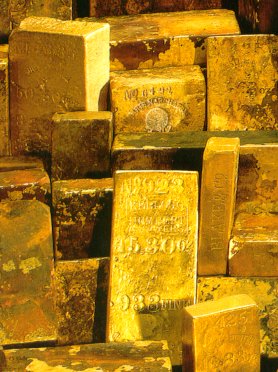
The Titanic
The Titanic was a passenger liner that sank into the frigid Atlantic in 1912 after colliding with an iceberg on her maiden voyage. More than 1,500 people died in what was the deadliest maritime disaster in history. She took with her Thomas Andrews, the ship builder, Captain Smith and numerous wealthy and famous society people. The Titanic became a romantic and legend that for decades was a conversation point as to could the Titanic ever be found and if it could, would it be raised. In 1953 a highly entertaining and wistful movie called simply Titanic was made starring Barbara Stanwyck and Clifton Webb. It further increased the curiosity of the great ship and led to numerous other fantasy and documentary movies, some movies were all about raising the Titanic and uncovering her mystique.
In 1985 all the wild and imaginative guesses as to what happened to the Titanic became a reality when Robert Ballard uncovered the wreck. Robots were used to go down to view and photograph the most famous shipwreck of all time.
Titanic in Her Prime
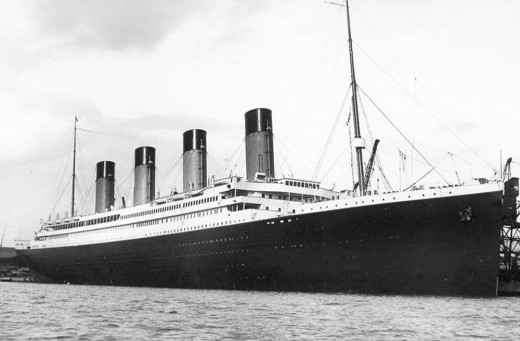
Titanic Remains
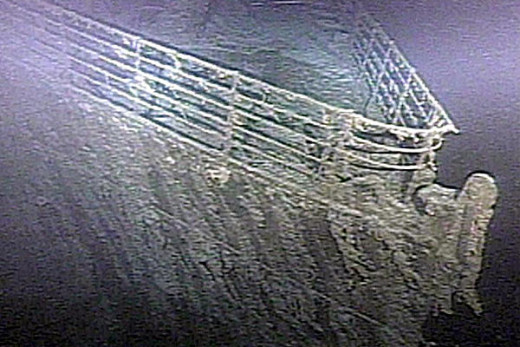
Historical Reading
- Famous Entrepreneurs. The Men Who Built Hollywood
Hollywood Entrepreneurs, Louis B Mayer, Adolph Zukor, Samuel goldwyn, and Harry Cohn. The Hollywood Entrepreneurs who made Hollywood - Disneyland in the 1950s- Original Rides and Attractions
The original rides of Disneyland. The Tiki Room is one of the longest lasting of the original rides. The Midget Autopia only lasted a few years, The People Mover monsanto house and lincoln. - All The Presidents; U.S. Presidents List of the First 15
All the Presidents. A list and short bio of the first 15 presidents. George Washington to James Buchanan.
